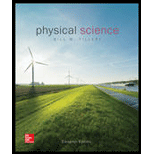
Physical Science
11th Edition
ISBN: 9780077862626
Author: Bill Tillery, Stephanie J. Slater, Timothy F. Slater
Publisher: McGraw-Hill Education
expand_more
expand_more
format_list_bulleted
Concept explainers
Textbook Question
Chapter 2, Problem 25PEB
What net force is required to accelerate a 20.0 kg object to 10.0111/s2?
Expert Solution & Answer
Trending nowThis is a popular solution!

Students have asked these similar questions
A car has an acceleration of 8.9 m/s2 and a weight of 21806 N. What net force is required for this car to have this kind of acceleration?
A constant net force of 1600 N gives a toy rocket an acceleration of 1.6 m/s.
What is the mass of the rocket?
In an experiment performed in a space station, a force of 88 N causes an object to have an acceleration equal to 8 m/s2. What is the object's mass?
Chapter 2 Solutions
Physical Science
Ch. 2 - 1. A straight-line distance covered during a...Ch. 2 - 2. How fast an object is moving in a particular...Ch. 2 -
3. Acceleration occurs when an object undergoes...Ch. 2 - Prob. 4ACCh. 2 -
5. A car moving at 60 km/h comes to a stop in 10...Ch. 2 -
6. According to Galileo, an object moving without...Ch. 2 -
7. In free fall, an object is seen to have a (an)...Ch. 2 -
8. A tennis ball is hit, causing it to move...Ch. 2 -
9. A quantity of 5 m/s2 is a measure of...Ch. 2 - 10. An automobile has how many different devices...
Ch. 2 - 11. Ignoring air resistance, an object falling...Ch. 2 - 12. Ignoring air resistance, an object falling...Ch. 2 - 13. Two objects are released from the same height...Ch. 2 - 14. A ball rolling across the floor slows to a...Ch. 2 - 15. The basic difference between instantaneous and...Ch. 2 - 16. Does any change in the motion of an object...Ch. 2 - 17. A measure of how fast your speed is changing...Ch. 2 - 18. Considering the forces on the system of you...Ch. 2 - 19. Newton’s first law of motion describes
a. the...Ch. 2 - 20. You are standing freely on a motionless...Ch. 2 - 21. Mass is measured in kilograms, which is a...Ch. 2 - 22. Which metric unit is used to express a measure...Ch. 2 - 23. Newton’s third law of motion states that...Ch. 2 - 24. If you double the unbalanced force on an...Ch. 2 - 25. If you double the mass of a cart while it is...Ch. 2 - 26. Doubling the distance between the center of an...Ch. 2 - 27. If a ball swinging in a circle on a string is...Ch. 2 - 28. A ball is swinging in a circle on a string...Ch. 2 - 29. Suppose the mass of a moving scooter is...Ch. 2 - 30. Two identical moons are moving in identical...Ch. 2 - 31. Which undergoes a greater change of momentum,...Ch. 2 - Prob. 32ACCh. 2 - 33. An astronaut living on a space station that is...Ch. 2 - Prob. 34ACCh. 2 -
35. You are at rest with a grocery cart at the...Ch. 2 -
36. Once again you are at rest with a grocery...Ch. 2 -
37. You are moving a grocery cart at a constant...Ch. 2 -
38. You are outside a store, moving a loaded...Ch. 2 -
39. Neglecting air resistance, a ball in free...Ch. 2 -
40. From a bridge, a ball is thrown straight up...Ch. 2 -
41. After being released, a ball thrown straight...Ch. 2 -
42. A gun is aimed horizontally at the center of...Ch. 2 -
43. According to the third law of motion, which...Ch. 2 -
44. A small sports car and a large SUV collide...Ch. 2 -
45. Again consider the small sports car and large...Ch. 2 -
46. An orbiting satellite is moved from 10,000 to...Ch. 2 -
47. Newton’s law of gravitation considers the...Ch. 2 - 1. An insect inside a bus flies from the back...Ch. 2 - 2. Disregarding air friction, describe all the...Ch. 2 -
3. Can gravity act in a vacuum? Explain.
Ch. 2 -
4. Is it possible for a small car to have the...Ch. 2 -
5. Without friction, what net force is needed to...Ch. 2 -
6. How can there ever be an unbalanced force on...Ch. 2 -
7. Why should you bend your knees as you hit the...Ch. 2 -
8. Is it possible for your weight to change while...Ch. 2 - Prob. 9QFTCh. 2 - 10. Suppose you are standing on the ice of a...Ch. 2 - 11. A rocket blasts off from a platform on a space...Ch. 2 - 12. An astronaut leaves a spaceship that is moving...Ch. 2 - 1. What are the significant similarities and...Ch. 2 - 2. What are the significant similarities and...Ch. 2 -
3. Compare your beliefs and your own reasoning...Ch. 2 -
5. Why is it that your weight can change by...Ch. 2 -
6. Assess the reasoning that Newton's first law...Ch. 2 - 1. What was the average speed in km/h of a car...Ch. 2 - 2. What was the average speed in km/h of a boat...Ch. 2 -
3. How much would an 80.0 kg person weigh (a) on...Ch. 2 -
4. What force is needed to give a 6,000 kg truck...Ch. 2 -
5. What is the resulting acceleration when a 300...Ch. 2 -
6. A boat moves 15.0 km across a lake in 30.0...Ch. 2 -
7. If the Sun is a distance of 1.5 108 km from...Ch. 2 -
8. How many meters away is a cliff if an echo is...Ch. 2 -
9. A car has an average speed of 80.0 km/h for 1...Ch. 2 - 10. What is the acceleration of a car that moves...Ch. 2 - 11. How much time is needed for a car to...Ch. 2 - 12. A rocket moves through outer space at 11,000...Ch. 2 - 13. Sound travels at 348 m/s in the warm air...Ch. 2 - 14. How many hours are required for a radio signal...Ch. 2 - 15. A rifle is fired straight up, and the bullet...Ch. 2 - 16. A rock thrown straight up climbs for 2.50 s,...Ch. 2 - 17. An object is observed to fall from a bridge,...Ch. 2 - 18. A ball dropped from a window strikes the...Ch. 2 - 19. Find the resulting acceleration from a 300 N...Ch. 2 - 20. What is the momentum of a 30.0 kg shell fired...Ch. 2 - 21. What is the momentum of a 39.2 N bowling ball...Ch. 2 - 22. A 30.0 kg shell is fired from a 2,000 kg...Ch. 2 - 23. An 80.0 kg man is standing on a frictionless...Ch. 2 - 24. (a) What is the weight of a 5.00 kg backpack?...Ch. 2 - 25. What net force is required to accelerate a...Ch. 2 - 26. What forward force must the ground apply to...Ch. 2 - 27. A 1,000.0 kg car accelerates uniformly to...Ch. 2 - 28. A net force of 3,000.0 N accelerates a car...Ch. 2 - 29. How much does a 60.0 kg person weigh?
Ch. 2 - 30. What tension must a 50.0 cm length of string...Ch. 2 - 31. A 200.0 kg astronaut and equipment move with a...
Knowledge Booster
Learn more about
Need a deep-dive on the concept behind this application? Look no further. Learn more about this topic, physics and related others by exploring similar questions and additional content below.Similar questions
- A force is a quantity that is ___ of producing motion or a change in motion. (3.1)arrow_forward. Under certain conditions, the human body can safely withstand an acceleration of 10 g. (a) What net force would have to act on someone with mass of 50 kg to cause this acceleration? (b) Find the weight of such a person in pounds then convert the answer to (a) to pounds.arrow_forwardA 63.0-kg sprinter starts a race with an acceleration of 4.20m/s2. What is the net external force on him?arrow_forward
- Forces are ___ quantities. (3.1)arrow_forwardA racing car can supply a net force of 5287 N which causes it to accelerate at a rate of 5.9 m/s^2. What is the weight of a car that is capable of this?arrow_forwardA space ship has a mass of 75,000 kg. What net force is required to accelerate it to 20 m/s2 ?arrow_forward
- What is the force act on a 20 kg object which accelerates with the acceleration of 360 cm/s^2?arrow_forwardA car has a mass of 1.30 × 103 kg. If the force acting on the car is 6.49 × 103 N to the east, what is the car’s acceleration? Answer in units of m/s 2 .arrow_forwardA constant net force of 1445 N gives a toy rocket an acceleration of 3.6 m/s2. What is the mass of the rocket?arrow_forward
- What net force is required to make a 3.0 kg object continue traveling at a constant speed of 2.0 m/s?arrow_forwardWhat is the magnitude of the net force needed to bring a 2085 kg car to rest from 25.6 m/s in 9.3 seconds?arrow_forwardWhat is the weight, in N, of an object with a mass of200 kg at a location where g = 9.6 m/s2?arrow_forward
arrow_back_ios
SEE MORE QUESTIONS
arrow_forward_ios
Recommended textbooks for you
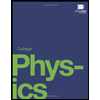 College PhysicsPhysicsISBN:9781938168000Author:Paul Peter Urone, Roger HinrichsPublisher:OpenStax College
College PhysicsPhysicsISBN:9781938168000Author:Paul Peter Urone, Roger HinrichsPublisher:OpenStax College An Introduction to Physical SciencePhysicsISBN:9781305079137Author:James Shipman, Jerry D. Wilson, Charles A. Higgins, Omar TorresPublisher:Cengage Learning
An Introduction to Physical SciencePhysicsISBN:9781305079137Author:James Shipman, Jerry D. Wilson, Charles A. Higgins, Omar TorresPublisher:Cengage Learning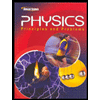 Glencoe Physics: Principles and Problems, Student...PhysicsISBN:9780078807213Author:Paul W. ZitzewitzPublisher:Glencoe/McGraw-Hill
Glencoe Physics: Principles and Problems, Student...PhysicsISBN:9780078807213Author:Paul W. ZitzewitzPublisher:Glencoe/McGraw-Hill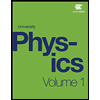 University Physics Volume 1PhysicsISBN:9781938168277Author:William Moebs, Samuel J. Ling, Jeff SannyPublisher:OpenStax - Rice University
University Physics Volume 1PhysicsISBN:9781938168277Author:William Moebs, Samuel J. Ling, Jeff SannyPublisher:OpenStax - Rice University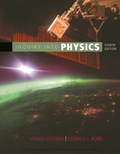

College Physics
Physics
ISBN:9781938168000
Author:Paul Peter Urone, Roger Hinrichs
Publisher:OpenStax College

An Introduction to Physical Science
Physics
ISBN:9781305079137
Author:James Shipman, Jerry D. Wilson, Charles A. Higgins, Omar Torres
Publisher:Cengage Learning

Glencoe Physics: Principles and Problems, Student...
Physics
ISBN:9780078807213
Author:Paul W. Zitzewitz
Publisher:Glencoe/McGraw-Hill

University Physics Volume 1
Physics
ISBN:9781938168277
Author:William Moebs, Samuel J. Ling, Jeff Sanny
Publisher:OpenStax - Rice University

Newton's Second Law of Motion: F = ma; Author: Professor Dave explains;https://www.youtube.com/watch?v=xzA6IBWUEDE;License: Standard YouTube License, CC-BY